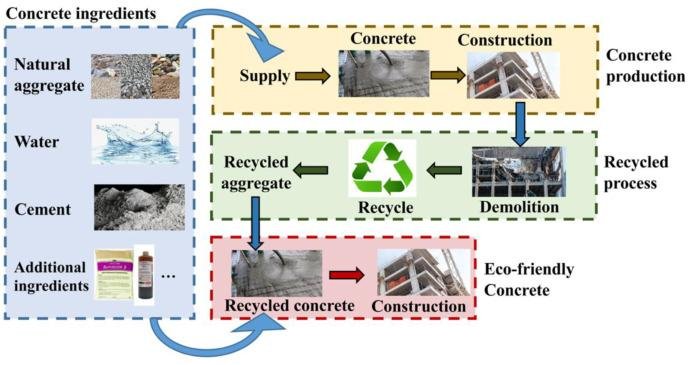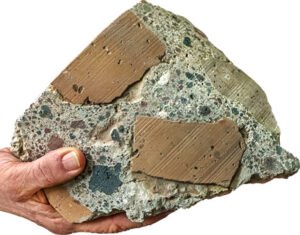The construction sector is striking a major crossroads. Concrete, a substance that we use so often but do not think about it much, is blamed for its environmental issues. A transformative national research initiative is born to combat this tremendous problem. Multidisciplinary collaborations between scientists and engineers have come about to design concrete alternatives that support structural integrity and significantly reduce carbon emissions.
The leading name in this project is Concretene, which is a product of Nationwide Engineering Research and Development Ltd. (NERD). This novel admixture makes use of graphene’s substance to create a denser matrix of concrete compared to what is familiar. Theirs is a method that allows for cement minimization by using structural or functional performance cement with no, or even, better outcomes, thus, reducing the construction project’s carbon footprint with a value of around 30%. The construction industry’s outlook is transformative because concrete production is a major source of global CO2 emissions at the moment.
The scheme has seen a variety of partners on board. Some other leading infrastructure stakeholders such as Heathrow Airport, Manchester Airport, Network Rail, and the National Highways authority have started the detailed investigation phase of applying eco-friendly concrete solutions in on-site implementation. Their cooperation is a clear sign of the confirm technology feasibility of innovative materials beyond labs.
Sustainable Construction Through Cutting-Edge Solutions
One of the principal scientists of this project, Saeed B. Nia, has made a major contribution to the study of various methodologies for the development of strong substitutes for the traditional concrete. His work has a focus on the use of locally sourced materials, which helps to give an additional sustainability dimension to the realized concrete products. This localized approach to the matter of emissions cuts transport-related ones while providing new economic opportunities to the localities where the required materials are sourced.
In Nigeria, some scientists have already suggested the use of environmental-friendly cement which is to be a tool to solve the problems of housing affordability. A conference which took place in April 2025 has brought out this issue during which specialists made a case for the inclusion of the alternative cement in the country’s agenda. The fact that international companies, e.g. the Swiss representation at the meeting, took part shows that the shift of focus to environment-friendly construction materials is a truly global matter.
Meanwhile, the University of Alabama has joined the efforts in this area by spearheading another cutting-edge project. The team has come up with a patented innovation that ingeniously utilizes carbon dioxide to strengthen concrete and at the same time makes its production greener. This novel approach to concrete manufacturing works to change the paradigm completely, turning a contributor to climate change into part of the resolution.
Companies that Drive the Change
The research that this nationwide project is based on is being carried out by the private sector and they have been highly cooperative in what has been accomplished. In March 2023, Black Swan Graphene and NERD formed a strategic alliance thus establishing an integrated supply chain meant to propel the global penetration of graphene-enhanced concrete. Their collaboration also included an equity swap which led to each firm acquiring a 5% stake in each other. This arrangement provides the interest alignment needed for easy sharing of knowledge between the material suppliers and the concrete developers.
Another new company in this sector, Brimstone, and two others, Sublime Systems and Chement have gone to such lengths as inventing new cement manufacturing processes that are completely carbon emissions-free. These startups represent the practical application of the concept of innovation in construction materials and through the activities, they illustrate how the employment of entrepreneurial reasoning can change even the most conventional industries.
The Graphene Engineering Innovation Centre (GEIC) is an important research platform also within this national project. Its knowledge of the advanced materials sector allows it to provide information and support to the conceptualization and the implementation of graphene enhanced concrete at scale. By working together with commercial partners, they help to push the transition from lab research to practical applications in the construction sector.
The construction sector as a whole is under the pressure of the legislative authorities. The actions to be taken by the players in the sector regarding meeting the new decarbonization targets and the resulting consequences for their sustainability and competitiveness require time for them to implement. The nationwide research initiative is a particular step in the direction of addressing the problems by intensifying efforts in the development and commercialization of ready-to-use green concrete products by construction companies of all sizes.
The combination of academic research, innovative companies, and compulsory rules, provides a strong atmosphere for changing the way we build our infrastructure. The nationwide initiative to develop eco-friendly, high-performance concrete is one of the most straightforward ways to minimize the construction sector’s impact on the environment and to enhance the structural performance. Although the program is very young, through synergetic partnerships and through the varieties of applications launched, it has demonstrated impressive progress.











